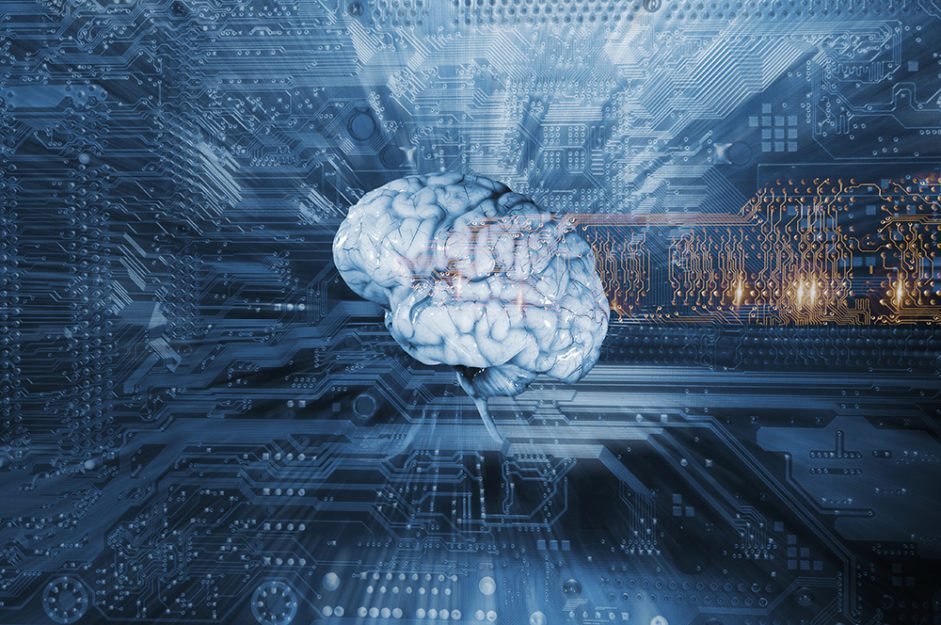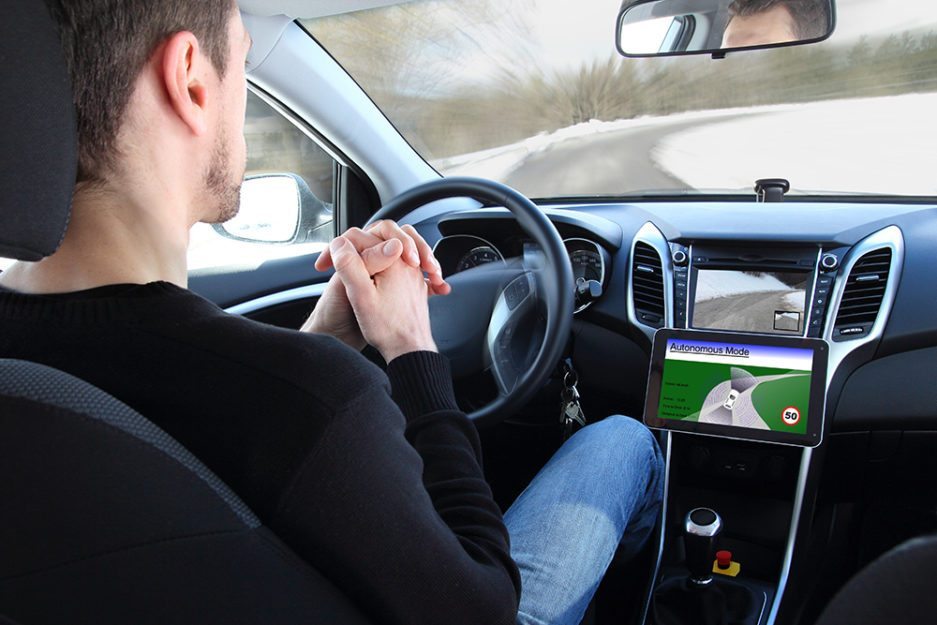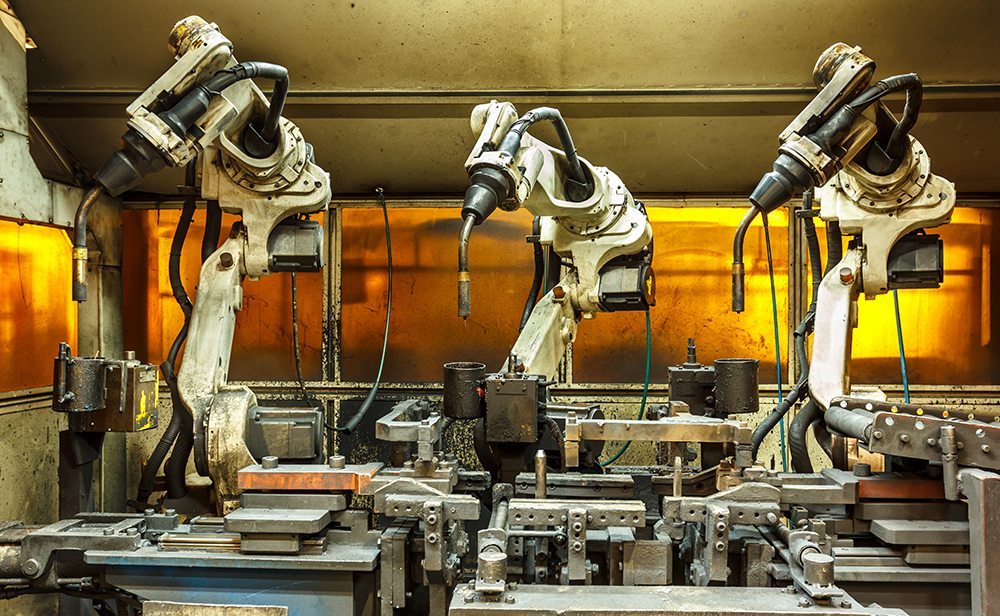Edit Note: How large is the threat of job losses through automation and artificial intelligence? Which sectors or industries are likely to be the hardest hit? How will the dynamics of disruption play out in different nations? And need a jobless future be such a bad thing? As we start a new weekly series on the future of jobs on FactorDaily, Indian-American technology entrepreneur and academic Vivek Wadhwa examines all this and more.
Autodesk CEO Carl Bass once said to me: “The factory of the future will have only two employees: a man and a dog. The man will be there to feed the dog. The dog will be there to keep the man from touching the equipment.”
Well, the day that Bass was speaking about is not very far away. Although he was speaking of the future of manufacturing, his statement applies to jobs in general. Automation is approaching a point at which robots can do the same physical tasks as humans, only much better and faster.
The reality is that we are facing a jobless future: one in which most of the work done by humans will be done by machines. Robots will drive our cars, manufacture our goods, and do our chores, but there won’t be much work for human beings.
The operating cost of some robots is already less than the salary of humans. That gap will widen. Boston Consulting Group predicts, for example, that by 2025, the operating cost of a robot that does welding will be less than $2 per hour, hardly comparable with the $25 that a human welder earns today in the US or even the pay of workers in the lowest-income countries. Already, with robots, the cost of manufacturing in the US is on par with that in China, where wages have been increasing faster than those of Indian IT workers.
As well, unlike human beings, robots don’t complain, join labour unions, or get distracted. It no longer makes senses for western companies to send raw materials to China to have Chinese workers assemble them into finished goods, or to outsource work to India, when their own robots can do the same work at the same or a lower price.
The reality is that we are facing a jobless future: one in which most of the work that humans do at present will be done by machines. This is a world in which advances in technology facilitate almost unlimited energy, food, and clean water; in which advances in medicine allow us to live longer and healthier lives; in which robots drive our cars, manufacture our goods, and do our chores. But there isn’t much work in it for human beings.
India and China are staring at job cuts
With advances in artificial intelligence (AI), any job that requires the analysis of information can be done better by computers. This includes the work done by medical, legal, and finance professionals: accountants and stock brokers. We will need some humans to interact with customers who prefer human contact, but the grunt work will disappear. Machines will need very few humans to help them. Oxford University researchers Carl Benedikt Frey and Michael A Osborne estimate that AI will put 47% of current U.S. employment “at risk”. McKinsey & Company believes that technologies could automate 45% of the activities that people are paid to perform.

The fear that automation and AI will eat up jobs is sweeping through India as well as the rest of the world. Google and Microsoft have demonstrated speech recognition and voice-to-text technologies that rival the cognitive abilities of human beings. AI-based tools will soon be able to do a better job of providing customer service than workers in Indian call centres do. Millions of outsourcing and IT jobs are at risk in the country.
China, fearing the demise of its industries, is setting up fully automated robotic factories in the hope that becoming more price competitive will let it continue to be the manufacturing capital of the world. But its advantage will hold up only for as long as the supply chains are in China and shipping raw materials and finished goods over the oceans remains cost effective. Supply chains will surely shift, and the trickle of manufacturing returning to the West will become a flood. In other words, China’s manufacturing will, over the next five or ten years, be decimated. Tens of millions of workers are about to lose their jobs there.
Healthcare and automobiles to be hit hard
While the threat that machines may replace humans is real and universal, it is likely to affect some sectors more than others. McKinsey says: “Automation, now going beyond routine manufacturing activities, has the potential, as least with regard to its technical feasibility, to transform sectors such as healthcare and finance, which involve a substantial share of knowledge work.”
Medical sensors in our smartphones, clothing, and bathrooms are monitoring our health on a minute-to-minute basis. With the data they gather; our electronic medical records; and our genome sequences, artificial intelligence–based tools such as IBM Watson will be able to do much of the work that our doctors do. Venture capitalist Vinod Khosla believes that technology will replace 80% of what doctors do, at the same time making doctors better at their jobs — quicker, more accurate, and more fact-based. The role of the doctor will eventually be more one of providing comfort and compassion rather than diagnosing disease or prescribing medicines.
Self-driving cars are already being tested on our roads; robo-trucks are not far behind. Several truck manufacturers have demonstrated trucks that can drive long hauls by themselves. And, in what was clearly a publicity stunt, Uber had a truck make the world’s first delivery by an autonomous vehicle, a consignment of 50,000 cans of Budweiser. In August, the world’s first self-driving taxis started picking up passengers in Singapore’s District One North.

All of this will free us up, reduce accidents, and increase fuel efficiencies, but it will lead as well to the disappearance of jobs. According to the American Trucking Associations, in 2010, approximately three million truck drivers were employed in the US, and 6.8 million others were employed in jobs relating to trucking activity, including manufacturing trucks, servicing trucks, and other types of jobs. So, roughly one of every 15 workers in the country is employed in the trucking business. And according to the US Bureau of Labor Statistics, roughly another 300,000 people work as taxi drivers and chauffeurs. We are talking about tens of millions of jobs disappearing all over the world.
The dynamics of disruption across countries
The disruption in employment won’t be uniform; some countries will be hit harder than others. The US has another 10 to 15 years in which there will be a role for humans. The number of jobs will actually increase in the US and Europe before it decreases. As manufacturing returns to the US, new factories need to be built, robots need to be programmed, and new infrastructure needs to be developed. To install new hardware and software in existing cars to make them self-driving, many new vehicle mechanics will be needed. Workers will also be necessary in manufacturing the new medical sensors, installing increasingly efficient solar panels, and writing new automation software. So the US will be fine for now.
“Automation, now going beyond routine manufacturing activities, has the potential, as least with regard to its technical feasibility, to transform sectors such as healthcare and finance, which involve a substantial share of knowledge work” — McKinsey
China, however, is out of time, because it has a manufacturing-based economy, and those jobs are already disappearing. Ironically, China is accelerating the demise of its manufacturing by embracing robotics and 3D printing. In May 2015, China launched a 10-year plan, called Made in China 2025, to modernise its factories with advanced manufacturing technologies, such as robotics, 3D printing, and the Industrial Internet. And then, in July 2015, it launched another national plan, called Internet Plus, “to integrate mobile Internet, cloud computing, big data and the Internet of Things with modern manufacturing.”
China has made this a national priority and is making massive investments. One province, Guangdong, committed to spending $150 billion to equip its factories with industrial robots and create two centres dedicated to advanced automation. But no matter how much money it spends, China can’t keep manufacturing or create the jobs. After all, American robots work as hard as Chinese robots. And they too don’t complain or join labor unions. They all consume the same electricity and do exactly what they are told. It doesn’t make economic sense for US industry to ship electronics components across the globe to have Chinese robots assemble them into finished goods to be shipped back, when that manufacturing could be done locally for almost the same cost. And eliminating shipping will allow what once took weeks to be done in days, and will reduce pollution.

Then there is Latin America. I had a long discussion with Mexican industrialist Carlos Slim Domit on the global impact of automation. He had a surprisingly good understanding of technological advances such as cloud computing, sensors, networks, robotics, AI, and 3D printing, and spoke of the importance that the resultant broader access to information, education, healthcare, and entertainment will have in uplifting society in the developing world. He also said it was important to share and spread the prosperity that such technologies will create.
Slim predicted the emergence of tens of millions of new service jobs in Mexico as increasing access to education and healthcare meets more of people’s basic needs and enables them to spend time on leisure and learning. He sees tremendous opportunities to build infrastructure and to improve the lives of millions of people in Mexico, who at present spend their lives trying to earn just enough to subsist.
India will see the same benefits as Mexico — for at least two or three decades. It has massive infrastructure to be built and hundreds of millions of people to lift out of poverty. Yes, its IT and call centre industries will be decimated, but, facilitated by a new digital infrastructure, entrepreneurs will build new industries and generate jobs.
Eventually, automation, robots, and artificial intelligence will take over many of the jobs humans do, and India too will see a jobless future. This may not be so bad. Don’t forget, hundreds of millions of people in India live hand to mouth. They earn just enough to feed their families, and sometimes not even that much. What if their basic needs could be met and they could be freed up to pursue new goals? That is entirely possible in the era of abundance that automation could provide.
A jobless future may not be so bad. Millions of people in India live hand to mouth. What if their basic needs were met and they could be free to pursue new goals? That is possible in the era of abundance that automation could provide
The jobless future will create social problems, because humans rely on jobs for social gratification; these are what their lives revolve around. This transition will not be easy, especially if we don’t do it equitably — which is a distinct possibility. I discuss the implications, risks, and opportunities of bettering mankind in my forthcoming book, The Driver in the Driverless Car: How Our Technology Choices Will Create the Future. The central message of the book is that technology is going to make amazing things happen, but that practically every industry will be disrupted and hundreds of millions of jobs are going to disappear, our lives changing for better and for worse.
If we manage it equitably and ease the transition and pain for those most affected and least prepared, we can attain a utopian Star Trek future, an era in which every one of us has food, shelter, education, and light and is connected to all. We will have better lives if we can adapt quickly enough — psychologically, socially, ethically, and legally — and adjust to a world that changes literally before our eyes, every day, every minute. But, if we don’t, we will experience social unrest and head towards the dystopia of Mad Max.
Ultimately, if we do things right, it will be an opportunity for India — and for the rest of the world — to return to an era in which we work to uplift ourselves and each other rather than merely to survive. In a jobless future, our objective of working in order to make money could give way to the objective of pursuing knowledge, music and the fine arts, spiritualism, and enlightenment. A collective choice to use these technological opportunities as a means to eradicate rather than entrench poverty and inequality is what will free all of us to pursue a life worth living.
Vivek Wadhwa is Distinguished Fellow at Carnegie Mellon University Engineering in Silicon Valley and Director of Research, CERC, Pratt School of Engineering, Duke University. He tweets from the handle @wadhwa.
Subscribe to FactorDaily
Our daily brief keeps thousands of readers ahead of the curve. More signals, less noise.
To get more stories like this on email, click here and subscribe to our daily brief.
Careernet is the sponsor of our Future of Jobs in India coverage and events. The coverage and the content of the event are editorially independent. For more on how we separate our newsroom and our business functions, read our code of conduct here.










